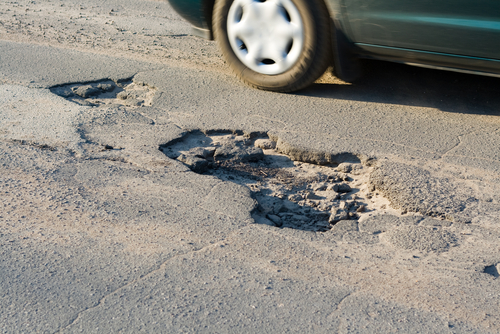I

n Texas, the ubiquity of potholes on roads isn’t just an inconvenience; it’s a stark indicator of public infrastructure in need of attention. More than just a nuisance, these potholes pose a significant risk of damage to vehicles, setting up drivers for a unique challenge. Unlike typical road incidents that involve another party, dealing with pothole damage pits you directly against the road, complicating the quest for compensation. For those affected, understanding the ins and outs of filing a pothole damage claim is crucial.
Navigating Pothole Damage Claims: Insights and Options for Texas Motorists
Securing compensation for pothole-induced vehicle damage primarily involves leveraging your insurance policy. While it’s possible to pursue claims against municipal authorities or seek intervention from the Texas Department of Transportation (TxDOT) via their online damage reporting system, there are critical nuances to be aware of:
- Municipal liability for vehicle damage due to road conditions is not mandated by state law.
- Legal battles over such claims can quickly become cost-prohibitive, often outweighing the potential benefits.
The role of car insurance, particularly collision coverage, is pivotal in these scenarios. While liability insurance is a legal requirement in Texas, it does not extend to damages from potholes. Collision insurance, on the other hand, offers a safeguard for your vehicle in accidents, irrespective of fault or the involvement of another party.
Exploring Full Coverage: A Strategic Approach to Pothole Damage
The term “full coverage” in auto insurance parlance refers to a blend of liability, comprehensive, and collision coverages, providing a more robust safety net:
- Liability coverage addresses legal obligations and damages to others in at-fault incidents.
- Comprehensive coverage caters to non-accident-related vehicle damage, such as weather impacts.
- Collision coverage ensures your vehicle’s repair or replacement post-accident, regardless of blame.
Opting for full coverage not only broadens your protection against a range of eventualities but may also offer financial advantages through multi-policy discounts. It’s especially pertinent for financed vehicles, where full coverage is often a lending stipulation.
Identifying Pothole Damage: Signs and Symptoms
Recognizing pothole damage is the first step towards filing a claim. Key indicators include flat tires, fluid leaks, steering issues, bent rims, and unusual noises from tires or the exhaust. Encountering these symptoms post-pothole encounter warrants a thorough vehicle inspection and, if necessary, professional repair services.
Understanding Pothole Formation
Potholes are a common aftermath of water seepage beneath pavements, leading to expansion, contraction, and eventual surface breakdown. This issue transcends climatic boundaries, making it a pervasive problem across Texas’ diverse landscapes. While avoiding potholes may not always be feasible, minimizing contact is advisable to prevent vehicle damage.
Engine Risks and Pothole Encounters
Although direct engine damage from potholes is rare, the associated risks to tires, suspension, and other critical components are significant. The size and shape of potholes, along with driving conditions, play a role in the extent of potential damage.
Legal Recourse for Pothole Damage: A Challenging Path
The prospect of seeking compensation from municipal bodies for pothole damage is often considered, but legal success is uncertain and potentially costly. For Texas drivers, the most reliable form of recourse is maintaining appropriate collision coverage, ensuring a viable pathway to reimbursement for pothole-related vehicle damage.
